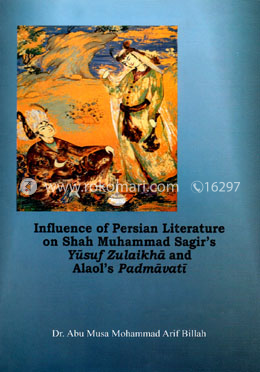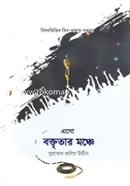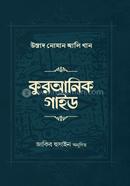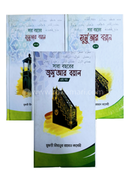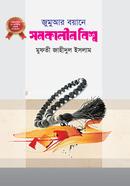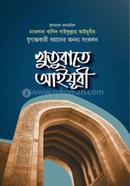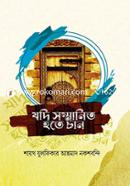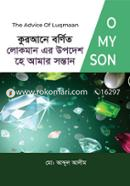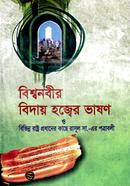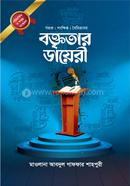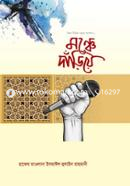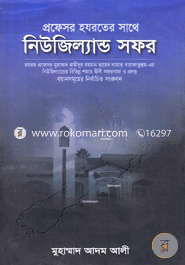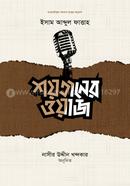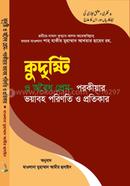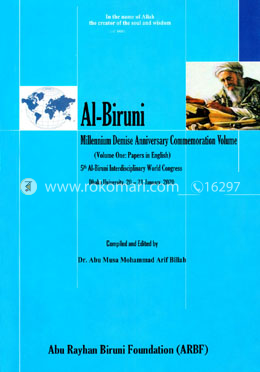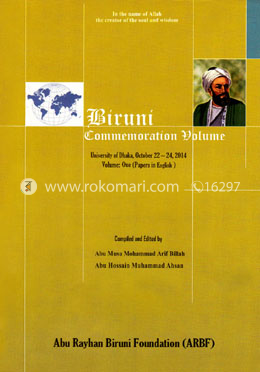Influence of Persian Literature on Shah Muhammad Sagir’s Yusuf Zulaikhā and Alaol’s Padmāvatī is a PhD research Monograph by Dr. Abu Musa Mohammad Arif Billah at School of Oriental and African Studies (SOAS), University of London. The book discusses and analyses as well as depicts many issues with a reflection on:
a) The historical background of Iran and Indo-Bangla Relations; Cultural and Literary Models – evolved with Buddhism and Hinduism and its integration during the early Muslim period. Development of Persian literary and Sufi traditions in Bengal and its impact on local vernacular language, literature and culture. Development of Bengali language and literature and a critical analysis of the controversy over ‘The Dark Age’ of Bengali language and literature.
b) It investigates how the story of Joseph in the Bible and of Yusuf in the Quran was transformed into a romantic love story Yūsuf va Zulaikhā by Persian poets, and how Sagir transformed it into Bengali with a local flavour. It also addresses how Perso-Arabic literary and Sufi tradition, especially the Yūsuf va Zulaikhā of Firdawsi, the tradition of commentaries on the Quran (Tafsīr) and tales of the prophets (Qiṣaṣ), influenced Sagir’s poetic thoughts.
c) Regarding Alaol’s Padmāvatī, after looking at the process of development of the story by analysing ancient and medieval local and foreign elements such as drama, fables, Sufi love poems and mythology, it assesses how Alaol transformed Malik Muhammad Jayasi’s Hindi poem Padmāvatī into Bengali. It examines how Perso-Arabic literary and Sufi themes, especially fāna, annihilation, and bāqa, subsistence, in Attar’s Manṭiqu’ṭ- Ṭair, influenced Jayasi in writing the Hindi poem Padmāvatī and Alaol in transforming it into Bengali.
PhD Research Monograph - pursued at the Department of Languages and Cultures of South Asia, SOAS, University of London, UK.
Publication:
Regarding the suitability of the publication of the thesis, both the examiners have certified that the thesis can be published as it is.
Abu Rayhan Biruni Foundation, Dhaka, has published the book with a magnificent cover design.
Table of Contents Abstract --
Acknowledgements
Notes on transliteration, dating and references
Abbreviations
Map of Bengal
Tables: * Table I : Perso-Arabic books in Khalji and Sultanate periods
* Table II : Perso-Arabic books in Mughal period
* Table III : Perso-Arabic books in British period
* Table IV : List of early Dobhāṣī poets
* Table V : Various opinions on Sagir’s period
* Table VI : Diagram of Joseph’s story in world literature
* Table VII : Comparison between the preambles of Firdawsi, Sagir and Jami
* Table VIII : Intertextuality and influences at a glance
* Table IX : Comparison between Shaikh-i Sanaan’s and Ratan Sen’s journeys
* Table X : Structural comparison between Manṭiqu’ṭ- Ṭair and Padmāvatī
* Table XI: Development of the Bengali poetic romance: Sagir to Alaol at a glance
Chapter One Introduction
1. 1. Introduction
* 1.2. Wider context
* 1.3. The historical background
* 1.3.1. The historical relations between Persia and Bengal and the influence of Persia in South Asia
* 1.3.2. The emergence of Muslim rule in Bengal and its effects
* 1.4. The topic
* 1.4.1. The necessity of the work
* 1.4.2. Sagir’s Yūsuf Zulaikhā
* 1.4.3. Alaol’s Padmāvatī
* 1.5. Methodology
* 1.6. Chapter scheme and the structure of the thesis
* 1.7. Manuscripts and editions
* 1.7.1 Manuscripts
* 1.7.2. Editions
Chapter Two Influence of Persian on medieval Bengali language, literature and culture
* 2.1. Introduction
* 2.2. Development of Persian language and literature in Bengal
* 2.2.1. Commercial contact and the influence of Persian
* 2.2.2. Sufism and the influence of Persian in Bengal
* 2.2.2.1. Development of Sufi thought in Bengal and South Asia
* 2.2.2.2. The movement of Sufis and the influence of Persian in Bengal
* 2.2.3. Development of Persian during Muslim and British rule
* 2.2.3.1. Khalji and Sultanate period (1203-1576 AD)
* 2.2.3.2. Mughal period (1576-1757)
* 2.2.3. 3. British period
* 2.3. Indigenous linguistic, literary and cultural traditions and the influence of Persian on Bengali language, literature and culture
* 2.3.1. Indigenous linguistic development and the development of Bengali language and literature
* 2.3.2. The cultural and literary models that evolved with Buddhism and Hinduism
* 2.3.2.1. Cultural and literary integration
* 2.3.2.1.1. Literary activities during the Pala period
* 2.3.2.1.2. Literary activities during the Sena period
* 2.3.2.2. Socio-cultural, religious and literary mutation in pre-Muslim Bengal
* 2.3.3. Bengali language, literature and culture in the Muslim period
* 2.3.3.1. Early period
* 2.3.3.1.1. A critical analysis of the controversy over ‘The Dark Age’ of Bengali language and literature
* 2.3.3.2. Medieval Period
* 2.3.4. Influence of Persian on the Bengali language
* 2.3.4.1. Vocabulary
* 2.3.4.2. Suffixes
* 2.3.4.3. Gender
* 2.5. Influence of Persian on medieval Bengali Literature
* 2.3.6. Influence of Perso-Arabic traditions and the emergence of new dimensions in medieval Bengali literature
* a) Devotionalism and romanticism
* b) Style and diction
* c) Mysticism and syncretism
* 2.3.7. Integration of Perso-Arabic, Sufi and indigenous traditions
Chapter Three Sagir’s Yūsuf Zulaikhā
* 3.1. Introduction
* 3.2. Outline of the biography of Shah Muhammad Sagir
* 3.3. Introduction to the Yūsuf Zulaikhā
* 3. 4. Period and patron
* 3.5. Background and Source
* 3.5.1. 3.5.1. The phases of development of the story
* 3.5.2. Quranic and post-Quranic development
* 3.5.3. Development of the story in Persian literature
* 3.5.4. Development of the story in Bengali literature
* 3.5.5. Source analysis of Sagir’s Yūsuf Zulaikhā
* 3.6. Intertextuality and influences
* 3.6.1. Authenticity of the Yūsuf va Zulaikhā of Firdawsi
* 3.6.2. Authenticity of Ghazzali’s Tafsīr
* 3.6.3. Intertextual analysis
* 3.6.3.1. Preamble
* a) Praise to God and the Prophet
* b) Praise to the parents and the Gurus
* c) Praise to the King
* d) Description of the compilation of the book
* 3.6.3.2. Main story
* 3.6.3.2.1. Events from the birth of Zulaikha to her arrival in Egypt
* 3.6.3.2.1.1. The name of the father of Zulaikha and her birth
* 3.6.3.2.1.2. The dreams
* i) The first and the second dreams
* ii) The third dream 143 3.6.3.2.1.3. The initiatives for marriage
* 3.6.3.2.1.4. Zulaikha’s journey to Egypt
* 3.6.3.2.1.5. The meeting of Aziz and Zulaikha and the despair of Zulaikha
* 3.6.3.2.2. Events from the auspicious birth of Yusuf to his arrival in Egypt.
* 3.6.2.2.1. The birth of Yusuf and the divine stick
* i) The birth
* ii) Beauty and glory
* iii) Love and affection
* iv) The divine stick
* 3.6.3.2.2.2. The dream
* i) Yusuf’s dream
* ii) The brothers receive the information of Yusuf’s dream
* iii) The evil plot of Yusuf’s brothers
* 3.6.3.2.2.3. Yusuf is thrown into a well
* i) An attempt to murder
* ii) Yusuf is thrown into the well and the divine message
* 3.6.3.2.2.4. The rescue of Yusuf by the Sage Maniru
* 3.6.3.2.3. Yusuf in Egypt
* 3.6.3.2.3.1. Zulaikha swoons
* i) Rumour about Yusuf’s beauty and the king’s initiative
* ii) Yusuf’s bath in the Nile
* 3.6.3.2.3.2. Zulaikha’s purchase of Yusuf from an auction
* i) The conversation between Aziz and Zulaikha over the purchase 1
*53 3.6.3.2.3.3. The spiritual guidance to Bareha’s daughter
* 3.6.3.2.3.4. Yusuf in Zulaikha’s house
* 3.6.3.2.3.5. Attempts to seduce Yusuf
* 3.6.3.2.3.6. Yusuf and Zulaikha in a garden
* 3.6.3.2.3.7. The building of a palace decorated with seductive paintings
* i) Yusuf and Zulaikha in the palace
* 3.6.3.2.3.8. False accusation and punishment
* i) Yusuf in the prison and the witness of a baby
* 3.6.3.2.3.9. Zulaikha’s effort to efface the scandalous shame
* 3.6.3.2.3.10. Yusuf in the luxury prison
* 3.6.3.2.3.11. Dream-interpreter Yusuf’s release from the prison
* 3.6.3.2.3.12. Yusuf as a minister, and king of Egypt
* 3.6.3.2.3.13. Zulaikha’s conversion and marriage
* 3.6.3.2.3.14. Final part
* 3.6.4. Addition
* 3. 7. Sufi dimensions
* 3.7.1. Characteristics of Sagir’s Sufi approach
* 3.7.2 Symbolism
* 3.7.2.1. Dream
* 3.7.2.2. The Journey and meeting with the beloved
* 3.7.2.3. Unity: relation between God and His creature
* 3.7.2.4. Some other examples of the Sufi thought of Sagir’s Yūsuf Zulaikhā
* i) Faintness
* ii) Suicide attempts and divines messages
* iii) The meeting of the lover and the beloved
* iv) The infusion of light (nūr)
* v) Devotion
* vi) Yaqub smells Yusuf’s scent from Canaan
* vii) Dhikir tradition
* viii) Allusion to fanā and baqā in Sagir’s Yūsuf Zulaikhā
* 3.8. Perso-Arabic lexical influence, style and form
Chapter Four Alaol’s Padmāvatī
* 4.1. Introduction
* 4.2. Outline of the biography of Alaol
* 4.3. Introduction to the Padmāvatī
* 4.4. Period and patronage
* 4.4.1 Critical opinion of scholars
* 4.4.2. Relevant information
* 4.4.3. Suggestion on the date 4.5. Background, sources and influence
* 4.5.1. Background
* 4.5. 2. Indigenous elements
* 4.5. 2.1. Myth and tales:
* 4.5.2.1.1. The tales of Padmavati in ancient indigenous tradition
* 4.5.2.1.2. Intertextual Comparison
* 4.5. 2.2. Use of the epic tradition
* 4.5. 2.3. Use of fables
* 4.5.3. The tales of Padmavati in the medieval indigenous tradition
* 4.5.3.1. Other medieval indigenous sources
* 4.5.3.1.1. Chandāyan
* 4.5.3.1.2. Mrigāvatī
* 4.5.4. Foreign elements
* 4.5.4.1. Arabic elements
* 4.5.4.2. Persian elements
* 4.5.4.3. Mystic elements
* 4.5.5. Historical elements
* 4.6. Mystic and Thematic Influence of Attar’s Manṭiqu’ṭ- Ṭair on Alaol and Jayasi’s Padmāvatī
* 4.6.1. The principal themes of Attar's Manṭiqu’ṭ- Ṭair 4.6.1.1. Attar’s fanā and baqā concept in Manṭiqu’ṭ- Ṭair
* 4.6.2 The principal themes of Jayasi’s Padmāvatī
* 4.6.2.1. Jayasi’s fanā and baqā concept
* 4.6.2.2. Fanā and baqā concept in Manṭiqu’ṭ- Ṭair and Padmāvatī of Jayasi
* 4.6.3. Padmāvatī of Alaol and the concept of fanā and baqā 4.6.4. Other spiritual and thematic influence 4.6.4.1. Invocations
* 4.6.4.1.2. In praise of God (ḥamd)
* 4.6.4.1.3. In praise of the prophet Muhammad (nact)
* 4.6.4.2. Abode of God Sīmorgh and beloved Padmavati
* 4.6.4.3. Search for the beloved – Hoopoe and Hiramon the pathfinders
* 4.6.4.4. Quality and knowledge of Hiramon and Hoopoe
* 4.6.4.5. The Voyage of Ratan Sen in Padmāvatī and the travel of Shaikh-i Sanaan in Manṭiqu’ṭ- Ṭair
* 4.6.4.6. Some other instances of faints
* 4.6.4.7. Seven valleys and seven seas
* 4.6.4.8. The story of Kakunuch bird
* 4.6.4.9. Final comments
* 4.7. Comparison between Jayasi’s and Alaol’s Padmāvatī
* 4.7.1. Alaol and Jayasi as poets
* 4.7.2. Alaol’s treatment of Jayasi’s Padmāvatī
* 4.7.3. Language
* 4.7.4. Art and music
* 4.7.5. Structure
* 4.7.6. Beauty of Padmavati
* 4.7.7. Wailing of Nagmati
* 4.7.8. Ratan Sen’s journey to Singhala
* 4.7.9. Devapal Sultan’s women messengers to Padmavati
* 4.7.10. Changes to the names of characters
* 4.7.11. Some major changes and additions in the final part of the poem
* 4.8. Perso-Arabic lexical influence, style and form
Chapter Five Conclusion
* 5.1. Introduction
* 5.2. Relations between Bengal and Persia, development of Bengali language and literature and culture
* 5.3. Pero-Arabic influence and literary and cultural integration
* 5.4. The Yūsuf Zulaikhā of Sagir 5.5. The Padmāvatī of Alaol
* 5.6. The characteristics of the Sufi thoughts in Sagir’s Yūsuf Zulaikhā and Alaol’s Padmāvatī
* 5.7. The Characteristics of love and mysticism in Yūsuf Zulaikhā and Alaol’s Padmāvatī as well as indigenous tradition.
* 5.8. The contribution of Sagir and Alaol to medieval Bengali literature
* 5.9. Conclusion
*
Appendices Appendix I : Outline of the history of Bengal, Bāngāli and Bānglā
* Appendix II : Sufism: an outline
* Appendix III : Pre-Quranic development of the Joseph’s story
* Appendix IV : Concept of love in Perso-Arabic Sufi and indigenous mystic traditions
* Appendix V : 1837 Ordinance
* Appendix VI : Rāj praśasti
* Appendix VII : The story of Shaikh-i Sanaan
* Appendix VIII : Outline of the biography of Alaol
* Appendix IX : Diagram of Yuhannan
Author Biography Billah, Abu Musa Mohammad Arif (PhD) is an Associate Professor of Persian in the department of Persian Language and Literature, University of Dhaka, Bangladesh. He was awarded – Overseas Scholarship for Dhaka University Teachers – to pursue a PhD research in the Department of South Asian Languages and Cultures, at the School of Oriental and African Studies (SOAS), University of London, and got his PhD degree awarded on The Influence of Persian Literature on Shah Mohammad Sagir’s Yūsuf Zulaikhā and Alaol’s Padmāvatī in 2009. During his stay in London, besides his PhD research, he was involved in teaching the Languages and cultures of Iran and South Asia (Persian, Bengali, Hindi, Dari) in SOAS Language Centre, University of London; Modern Language Centre (MLC), Kings College London; and in the Department of South Asia, SOAS, University of London. He was a member of specifications and curriculum development committee, moderation board, setter of exam papers etc of Asset Language Programme, University of Cambridge. He received a B.A. and an M.A. in Persian from Dhaka University. He has also obtained a degree of Mumtazul Muhaddethin – Kamil in Hadith, from Madrasa-i Alia Dhaka. He also studied [short courses] Islamic Law, Logic, Philosophy, Tafsir, Persian Language, Arabic at Hujjatia School in the holy city of Qum, Islamic Republic of Iran, on a scholarship by the school. He attended many conferences in Iran, India, Pakistan, Scotland, Germany, England, Bangladesh, including European Conference on Modern South Asia at Edinburgh in 2000, Heidelberg in 2003, and at Manchester in 2009. He was born in 1966 in Bogra, Bangladesh. His Main publications are: ‘Influence of Natural and Creative Elements in the Intellectual Development of the Children and youths and its impact in human society’ International Conference on Contemporary Philosophy of Religion, Tehran (2014); ‘Reconstruction of the contemporary political thoughts in the light of various socio-cultural dimensions in Islam’ http://www.iranoworld.ir/3rd/papers/IranoWorld2012_F13_ArifBillah.pdf, (2013); ‘Khadmate Daneshmandane shibhe qarreh beh zaban v adabiyate farsi’ Collection of the articles of the First regional conference, Islamabad (1993); Origin and Development of Tazia In Iran’ The Dhaka University Studies (1994); ‘Origin and Development of Persian Drama in Iran’ The Dhaka University Studies (2000); ‘Indo-Iranian Relations During the Vedic and Avestic Period’ Journal of the Centre for Social Science Research (2000); ‘Influence of Persian in the Sub-continent During the Ghaznavid Period’ Social Science Review (1997); ‘The Development of Bengali Literature during Muslim Rule’ South Asian Cultural Studies (Edge Hill University, Vol. 2); ‘Lexicographic Affinities Between Persian and Bengali Languages’ SOAS Working Paper in Linguistics, (Vol. 12. 2002). Current project: 1) Indo-Iranian Historical and Cultural Relations since 6000 B. C. to Date; 2) Reconstruction of the contemporary political thoughts in the light of socio-cultural and political dimensions in Islam; 3) History of Persian Language and Literature in Bengal. Compiled and Edited books: a) Biruni Commemoration Volume, Vol: One, Collection of English papers presented in the 1st Biruni International Conference held at Dhaka University on 5-6 February 2014, Published by Abu Rayhan Biruni Foundation, Dhaka in 2014; b) Biruni Commemoration Volume, Vol: Two, Collection of Persian papers presented in the 1st Biruni International Conference held at Dhaka University on 5-6 February 2014, Published by Abu Rayhan Biruni Foundation, Dhaka in 2014. Dr. Billah on his return from England established Al- Biruni Foundation, Dhaka, Bangladesh, in 2011. Later, the name of the Foundation was amended to Abu Rayhan Biruni Foundation (ARBF) in 2013 under a new memorandum of understanding with a new executive committee, incorporating research scholars from various departments of the University of Dhaka, in order to undertake a new research dimension in Bangladesh.
[email protected];
[email protected] ![]()





 Hello, Sign in
Hello, Sign in 
 Cart
Cart 


















